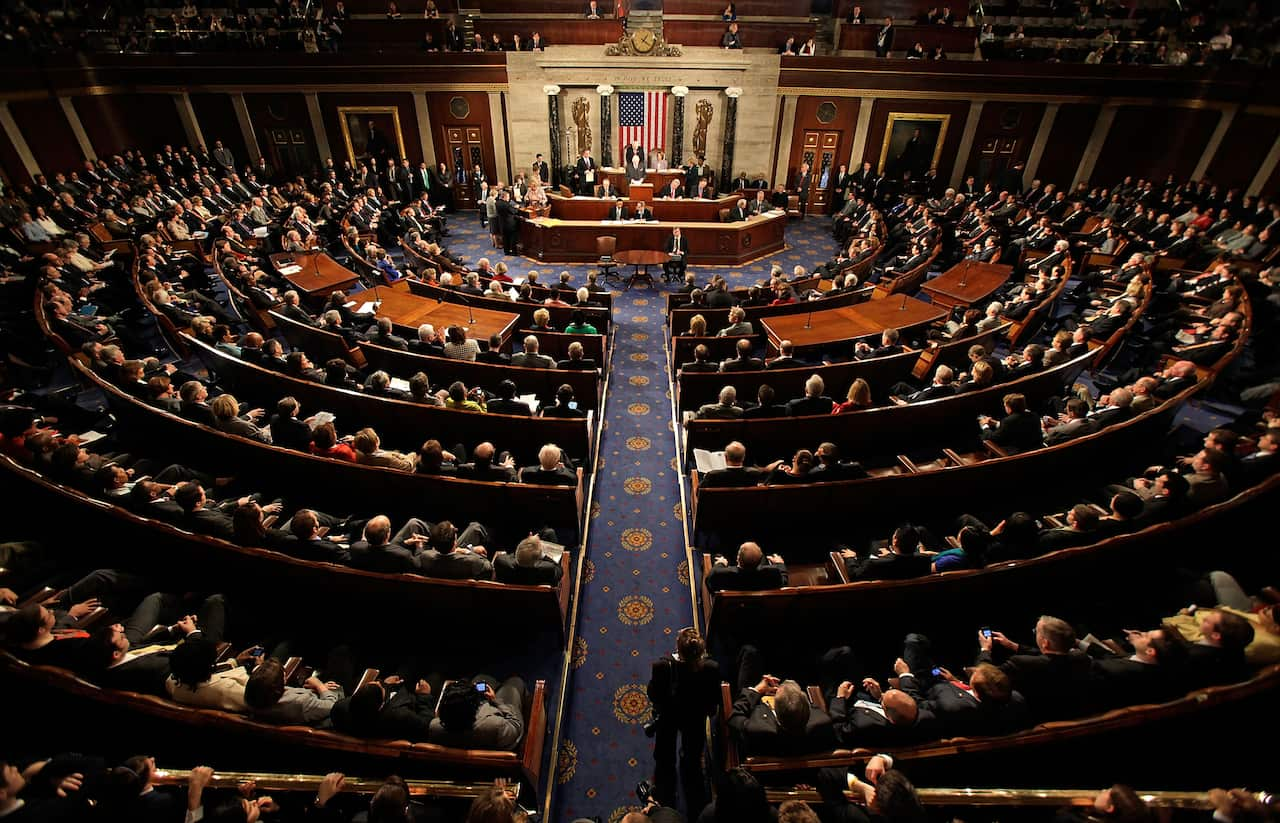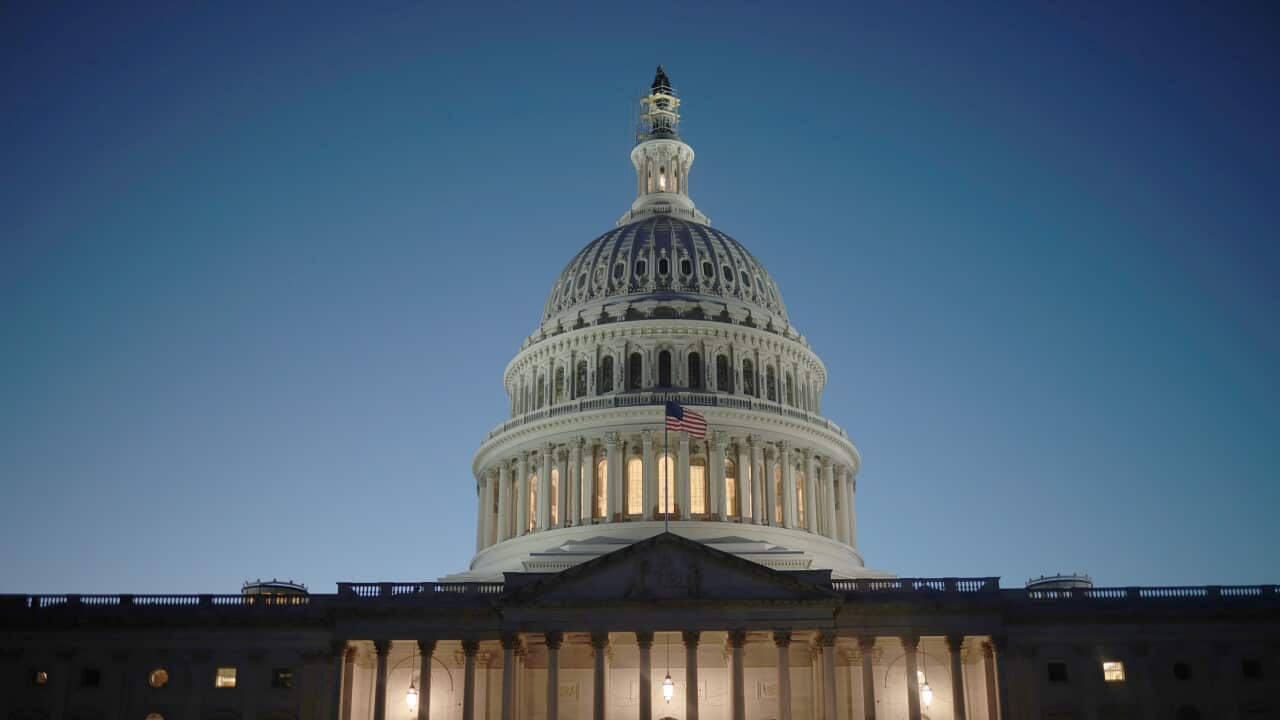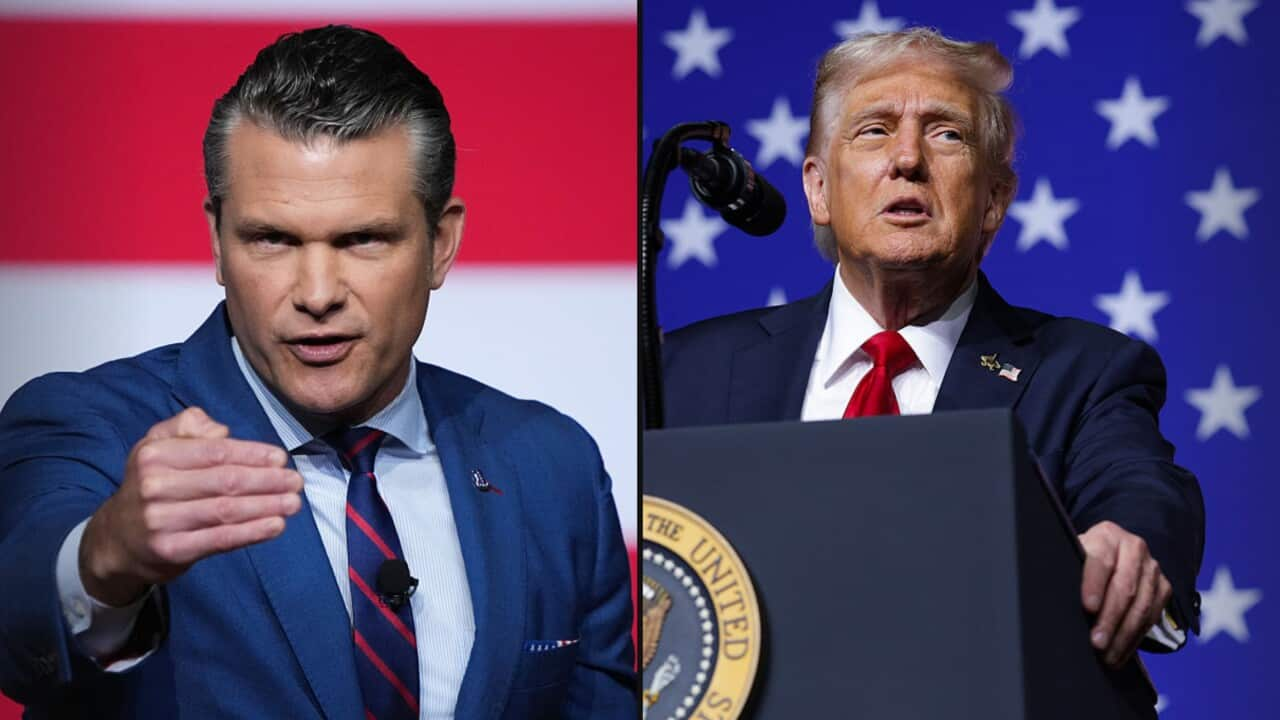The United States government has entered a shutdown, after Congress failed to pass critical spending legislation that funds the federal workforce before a Wednesday deadline.
Senate Democrats voted down a Republican bill to keep funding the government in the final hours before the clocks ticked past midnight on Wednesday (local time), leading to the first federal shutdown in nearly seven years.
US government agencies must now discontinue all but "essential" activities, such as law enforcement, potentially disrupting everything from air travel to the monthly unemployment report.
Budget stand-offs have become routine in the US as the nation's politics have grown more dysfunctional.
This time around, Democrats have insisted that any spending bill must include additional healthcare subsidies, while Republicans have insisted the two issues should be dealt with separately.
The impending shutdown will be different from past government closures, as President Donald Trump had warned Democrats that his administration would take "irreversible" actions if they allow government funding to lapse, including mass firings of federal workers.
What happens during the shutdown?
Ahead of the deadline, agencies issued detailed shutdown plans that would close offices conducting scientific research, customer service, and other "nonessential" activities and send tens of thousands of workers home without pay.
Military troops, border guards, and others performing work deemed "essential" will be asked to stay on the job, but they will not receive pay until Congress resolves the standoff.
Airlines warned a shutdown could slow flights, while the US labor department said it would not issue its monthly unemployment report, a closely watched barometer of economic health.
The Small Business Administration announced it would halt loan issuance, while the Environmental Protection Agency said it would suspend certain pollution cleanup efforts.
Why is this happening?
When Congress fails to appropriate more money before a funding deadline, the funding lapses, and agencies are forced to halt normal operations until spending legislation is passed.
Shutdowns became less common in recent decades, but an increasingly divided political environment has left Congress unable to agree on spending.

The last federal shutdown, which lasted 35 days from December 2018 to January 2019, was the longest closure in US history. Source: Getty / Chip Somodevilla
Without a fix, healthcare costs for 24 million Americans would rise sharply, with a disproportionate impact in Republican-controlled states like Florida and Texas that have refused to enact other aspects of the law that provide coverage to low-income people.
Democrats have also sought to ensure Trump will not be able to undo those changes if they are signed into law.
"It does nothing, absolutely nothing to solve the biggest health care crisis in America," Senate Democratic leader Chuck Schumer had said in urging his colleagues to vote against the bill.
Republicans said they were open to a fix, but accused Democrats of holding the budget hostage to satisfy the demands of their base voters ahead of the 2026 midterm elections, when control of Congress will be at stake.
"The far left's determination to oppose everything President Trump has said or done is not a good reason to subject the American people to the pain of a government shutdown," Senate Republican leader John Thune said.
Democrats said they believed they were making headway with Trump after a meeting at the White House earlier this week. But hours later, Trump posted an AI-generated deep-fake video showing manipulated images of Democratic leaders that drew on stereotyped images of Mexicans.
What happened last time the government shut down?
The government shut down for 35 days in 2018 and 2019, during Trump's first term, due to a dispute over immigration. That was the longest shutdown in more than 40 years and cost the US economy an estimated US$3 billion ($4.5 billion), or 0.02 per cent of GDP.
It was a partial shutdown, meaning Congress had approved funding for certain agencies, keeping their lights on while others were forced to close.
Around 800,000 workers were employed at the departments that shut down, and roughly 300,000 of those were furloughed, meaning they were put on leave without pay.
Those who did report to work were not paid until the agencies reopened and the spending package was passed.
There have been six shutdowns since 1990.
Trump threatens to lay off Democrats
Trump has added fuel to the fire as he threatened to cancel programs favoured by Democrats and fire more federal workers if the government shut down.
"We'll be laying off a lot of people," Trump told reporters. "They're going to be Democrats."
That would lead to further brain drain for the government.
More than 150,000 workers are set to leave federal payrolls this week after accepting a buyout, marking the largest exodus in 80 years. Tens of thousands more have already been fired this year.
Trump has also refused to spend billions of dollars approved by Congress, prompting some Democrats to question why they should vote for any spending bills at all.
In memos to soon-to-be-furloughed employees, several agencies, including the justice department and the social security administration, blamed Democrats for the impending shutdown, violating long-standing norms that aim to shield government workers from partisan pressure.
Share



